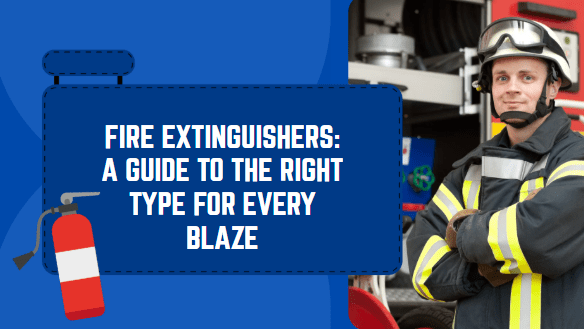Understanding Fire Classification: It’s Infinitely More Complex Than You Think
Fire behavior depends entirely on what’s burning. Sounds ridiculously obvious, right? But here’s where everything gets incredibly tricky, where most people’s understanding completely breaks down. Different materials require completely different suppression methods—methods that seem counterintuitive and defy common sense.The Five Fire Classes You Need to Know
Class A Fires: Ordinary Combustibles Wood, paper, fabric, most plastics, cardboard, rubber. These burn steadily and predictably, creating the classic flickering flames most people visualize when they think “fire.” Waterworks perfectly here because it cools the burning material below its ignition point through basic heat absorption.
However, even Class A fires present unique challenges. Dense materials burn differently than thin ones. Smoldering fires can reignite hours later. Wind conditions dramatically affect suppression effectiveness.
Class B Fires: Flammable Liquids Gasoline, oil, grease, paint, alcohol, solvents, kerosene. Water becomes your enemy here—it spreads the burning liquid everywhere, creating multiple fire sources instead of eliminating the original threat. Instead, you desperately need foam or CO2 extinguishers that smother flames by cutting off the oxygen supply completely. The key strategy involves creating a blanket effect over the liquid surface, preventing vapor release.
Liquid fires burn differently than solid fires. They spread rapidly across surfaces, creating dangerous vapors. They can also float on water, creating floating infernos that seem impossible to control.
Class C Fires: Electrical Equipment Non-conductive Agents Only! CO2 and dry chemical extinguishers won’t return electricity to you, preventing electrocution during suppression efforts. Never use water on electrical fires unless the power source is completely shut off at the main breaker.
Electrical fires create unique dangers beyond electrocution. These include live wires, computer panels, etc. They can reignite instantly when power returns, often involving toxic plastics and metals and frequently occurring in enclosed spaces with limited ventilation.
Class D Fires: Combustible Metals Magnesium, titanium, sodium, potassium, lithium, and aluminum powder burn incredibly hot—sometimes exceeding 3000°F—and react violently and explosively with water or standard extinguishing agents. Special dry powder extinguishers are required. Regular extinguishers can intensify these fires dramatically, creating dangerous situations that spiral quickly out of control.
Class K Fires: Cooking Oils and Fats High-temperature cooking oils in commercial kitchens, deep fryers, and industrial cooking equipment. These fires burn significantly hotter than regular grease fires and need wet chemical extinguishers specifically designed for this application. The chemicals create a foam blanket while cooling the oil below its ignition temperature.
Commercial kitchen fires spread with terrifying speed, creating massive amounts of smoke. They can flash over instantly, engulfing entire kitchen areas in seconds.
Multi-Class Extinguishers: The Versatile Solution Everyone Loves
They’re the Swiss Army knives of fire suppression—versatile, reliable, and perfect for most homes and standard office environments. But versatility inevitably comes with significant trade-offs. An ABC extinguisher might work adequately on multiple fire types, but specialized extinguishers almost always perform substantially better on specific fires.The dry chemical powder in ABC extinguishers works through multiple mechanisms. It interrupts chemical reactions, creates barriers between fuel and oxygen, and absorbs heat energy. However, the powder residue can damage electronics, contaminate food, and create cleanup challenges.
Maintenance: The Critical Factor Everyone Completely Ignores
Here’s a sobering, terrifying reality that keeps fire safety professionals awake at night: fire extinguishers fail. Regularly. Pressure slowly leaks through microscopic seal failures. Chemicals settle, separate, or degrade over time. Seals deteriorate from temperature fluctuations. Moving parts corrode from humidity exposure.Some extinguishers require complete recharging every few years, regardless of whether they’ve ever been used. This seemingly wasteful practice is because the chemicals inside have strictly limited shelf lives and gradually lose effectiveness over time.
Regular Fire Extinguisher Service isn’t just recommended—it’s absolutely essential for reliability when seconds count. An extinguisher that fails during an emergency becomes worse than having no extinguisher because it provides false confidence while precious, irreplaceable seconds tick away relentlessly.
Strategic Placement: Location Matters Infinitely More Than You Think
Where you place the extinguishers can single-handedly determine whether they’re lifesaving tools or useless decorations during emergencies. They must be easily accessible during panic situations but not positioned so close to potential fire sources that advancing flames block access entirely.Kitchen extinguishers shouldn’t go directly above stoves—heat and flames could make them unreachable when needed most. Instead, place them strategically near kitchen exits, where you can grab them quickly while maintaining clear escape routes to safety.
For electrical panels, position extinguishers where you can reach them safely even if the electrical system becomes completely compromised, sparks, or creates dangerous conditions. Consider lighting conditions carefully, too—will you be able to locate the extinguisher in thick smoke or complete darkness?
Always, always maintain crystal-clear escape routes. Never position yourself between an active fire and your only available exit. Fight fires from the side whenever possible, keeping your escape path directly behind you for immediate retreat if conditions deteriorate rapidly.
Height matters tremendously. Mount extinguishers where people can reach them easily but high enough to prevent tampering or accidental discharge. Consider the physical capabilities of everyone who might need to use them.
Training: Knowledge Under Extreme Pressure
Muscle memory developed through practice saves lives when conscious thought becomes impossible.The PASS technique remains universal:
- Pull the safety pin firmly
- Aim at the base of the flames origin
- Squeeze the handle steadily and completely
- Sweep side to side in controlled motions
But knowing precisely when to fight and when to evacuate immediately becomes equally important. If the fire exceeds the size you can span with both arms extended, don’t attempt suppression—evacuate immediately and call professional firefighters.
Smoke kills more people than flames ever do. If visibility becomes severely limited, evacuation takes absolute priority over firefighting attempts. You simply cannot fight what you cannot see clearly, and smoke inhalation can incapacitate you within minutes.
Practice using extinguishers regularly. Many fire departments offer hands-on training with controlled fires. The experience of operating an extinguisher under realistic conditions proves invaluable when real emergencies strike without warning.
The Bottom Line: Don’t Leave Safety to Chance
Fire extinguishers represent your first, most critical line of defense against disaster, but only when properly selected, professionally maintained, and expertly deployed. Modern fire risks’ staggering complexity demands professional assessment and ongoing maintenance programs.Different buildings face dramatically different risks. Offices encounter challenges that are completely different from those faced by restaurants, manufacturing facilities, or healthcare institutions.
Professional fire safety experts understand these critical nuances through experience and training. They systematically assess your specific risks, recommend appropriate equipment configurations, and ensure everything functions flawlessly when needed most. Because when a fire strikes without warning, there’s no second chance to get things right.
Your safety, your property, and your precious lives depend entirely on making informed fire protection decisions today. Don’t gamble recklessly with fire safety—invest wisely in proper equipment, professional maintenance, and comprehensive training programs.




